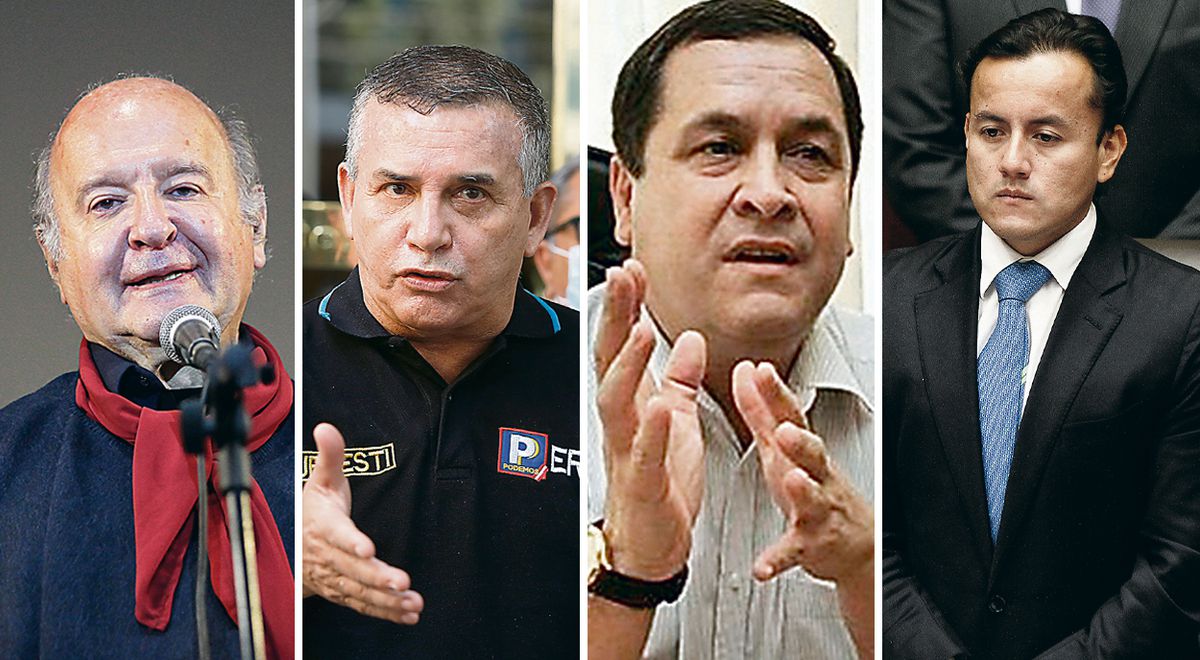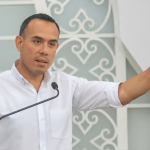Center-right political parties and leaders envision an electoral path towards 2024 in which consensus and novelty will be key to tempting the Presidency of the Republic.
The economist and former presidential candidate Hernando Sotowhich was close to going to the second round in 2021, talks with various political groups with a view to possible understandings for electoral incursions. He has not joined the party since he resigned from Avanza País a year agogroup with which he applied.
“De Soto is an option that I personally like, we have conversations and a friendship, but the decision of whether to go with us is made by the collective in my organization,” he says. Alvaro Paz de la Barrapresident of the Fe party in Peru.
On my way. Paz de la Barra is about to register her organization. Photo: diffusion
In Alliance for Progress (APP), the mission of seeking a consensus candidacy of the center-right has been taken. Although one sector sees Richard Acunaformer congressman and son of the party leader, as a possible letter, the apepista leader Luis Iberico rules out that option.
the congressman Roberto Chiabraelected with APP but distanced from the apepistas, is in the process of forming a party called Unity and Peace. They seek a novel offer, appealing to their leader’s military past, especially his participation in the conflict with Ecuador.
we can peru maintains former parliamentarian Daniel Urresti as his preferred card, despite their defeats in two municipal elections and one presidential.
The businessman Carlos Añaños shows interest in entering politicsbut sources from your environment They allege that he could join in supporting a similar candidacy. In 2021 he was announced by De Soto as a possible member of his presidential board, but that did not materialize.
The Popular Christian Party (PPC)once a traditional brand in the center-right spectrum in the country, is in an attempt to re-enroll in the JNE. Its latest presidential candidate, the former congressman and well-known journalist Alberto Beingolealeft the group and politics.
In project. Chiabra and his team put together their own party. Photo: diffusion
reflections
“The center-right has a chance if the correlation of forces allows promoting leadership that channel demands especially from urban sectors. In the regional elections, the right-wing positions had a political space strengthened by the eventual performance of the government of Castleespecially in Metropolitan Lima and in the urban interior,” says political scientist María Melgar, from the University of San Marcos.
“The majority vote in Peru is not ideological. A center-right candidate, if he manages to have a popular anchorage without colliding with his speech for the upper class, can go to the second round and there he is resolved by the adversary, ”says Luis Benavente, from Vox Populi.
The Castillo background also marks the opportunities.
“After the performance achieved by the Castillo administration, there is no doubt that the country has produced an unbeatable scenario for the center-right. Its success will depend on satisfying the historical demands of deep Peru and making those compatriots feel the benefits of the model, which Castillo was unable to materialize, overwhelmed by subaltern interests”, argues political consultant Richard Tapia, director of the Peruvian Institute of Political Communication (Ipecop).
“In that space, there are still no clear figures that can channel and take advantage of that scenario”assures.
The data
37% of citizens in the country identify with political positions of the center and 36% with positions of the rightaccording to the latest national survey of the Institute of Peruvian Studies (IEP)made this month.

















